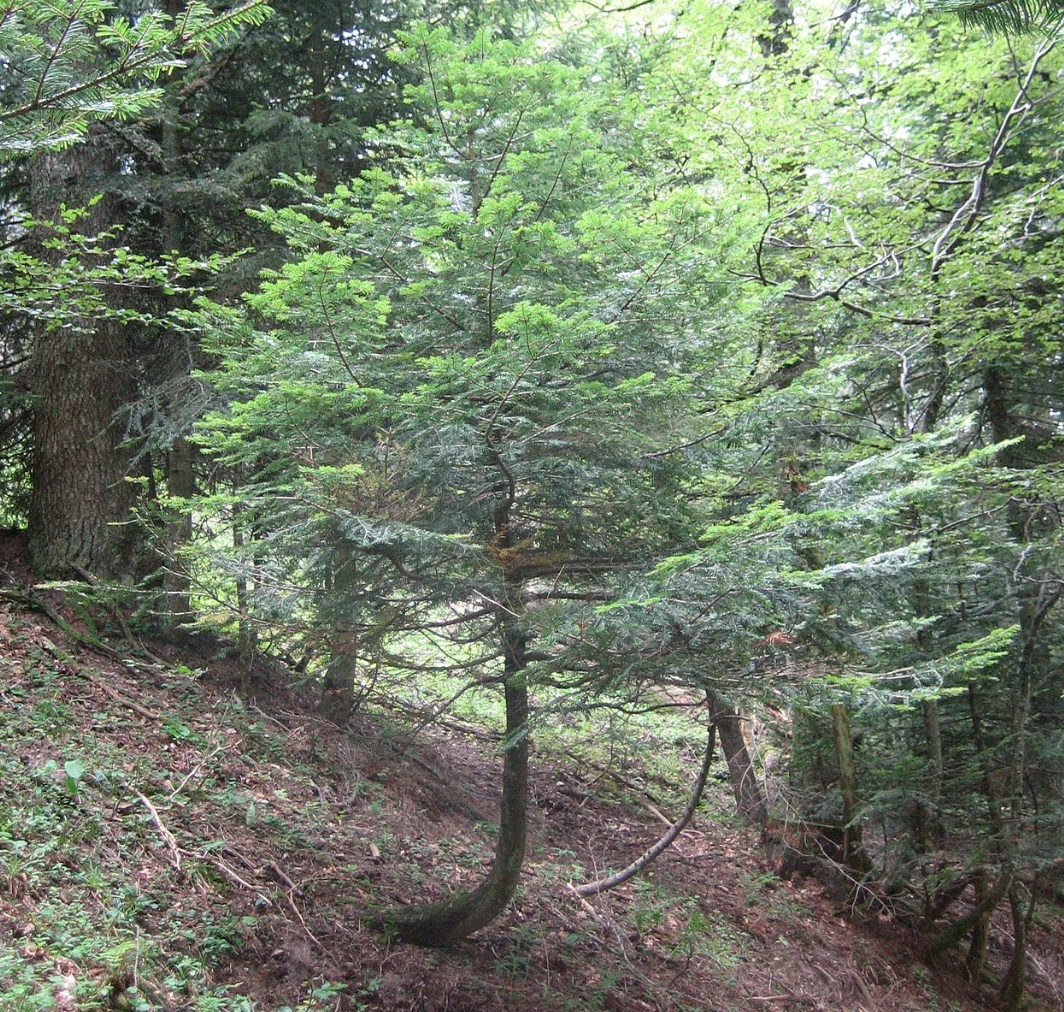Mushroom caps must be oriented in a parallel position to the ground so their spores can fall directly down through gills and pores unperturbed. Just how do they sense their orientation though? Well, it turns out they perceive gravity, and use these cues to initiate a physiological response. For a few reasons, this week’s edition of Fungi Friday is featuring Flammulina velutipes, also known as the velvet shank. The main reason this fungus is being presented is because when tilting a perfectly upright individual 90°, it can adjust its cap to be parallel to the ground in just three hours. Without a brain or nervous system, these organisms have evolved some interesting ways to interpret cues from the outside world. Not only can Flammulina velutipes sense gravity, but it has a prompt response worth reading about.
Flammulina velutipes. By Ryan Patrick.
Like fungi, us humans are constantly sensing our environment. As bipedal organisms, we need to be able to sense gravity to help us remain balanced. In our inner ear, three semicircular canals lie, filled with a fluid. The fluid comes in contact with tiny hairs located on a miniature cone shaped structure called the crista ampullaris. The fluid interacts with these hairs, which are connected to nerves that send signals to the brain. These inner ear mechanisms translate to our bodies interaction with gravity and angular momentum. You can thank these evolutionary marvels that is the inner ear, for that feeling you get when you stand up from laying on the couch too quickly. Over and over, I am reminded by nature that there are endless solutions that can evolve overtime.
Our gravity perceiving inner ear.
In plants, graviperception occurs when the dense cytoplasmic particles called statoliths congregate on the lower sides of the cells in horizontally oriented plant tissues. Depending on how these statoliths are positioned, the plant can orient itself in relation to gravity. Mushrooms on the other hand do not have statoliths. Instead, Flammulina velutipes use their denser nuclei to help sense their environment. Nuclei are enmeshed in filaments of F-actin, so sedimentation doesn’t occur like it does in plants. Instead, the tension of the actin filaments is transmitted to the plasma membrane, triggering a cascade of physiological responses, ultimately changing the mushrooms orientation.
Gravitropism in plants. Trunk adjustments make help the tree remain upright.
This hypothesis of fungal graviperception has been strengthened through further experimentation. The actin-depolymerizing drug cytochalasin was administered to Flammulina velutipes and its response to gravity was greatly reduced. Without rigid filaments of actin, there is no means to translate tension into a gravitropic response. The fungus with intact filaments can initiate a response that greatly enhances its reproductive effort. The cascade of internal events ultimately manipulates the portion of the stipe just beneath the cap. The cells in the lower side of the stipe closer to the ground enlarge, while the cells on the opposite side of the stipe remain the same. This causes the stipe to curve upwards. The enlargement of the cells occurs when microvesicles fuse with the vacuoles in the lower side of the stipe. Other materials like enzymes and wall precursors develop in the lower flank, additionally adding to cell enlargement.
Arrows indicating the position for cellular enlargement in Flammulina velutipes.
In 1996, one of the coolest, Sci-Fi experiments ever was conducted using this species. To better understand gravitropism, Flammulina velutipes was grown in outer space upon the international space station. Without any gravitational cues, these fungi grew in random directions. Even still, they grew away from their substrate showing that they’re also negatively hydrotropic; growing away their water filled substrate. This fungus also needs light to grow, so there are several environmental ques the organisms uses simultaneously. This is remarkable to me because these fungi lack a central nervous system-a biological component we rely on so much.
Flammulina velutipes found in Germany. By Alexander van Burgeler.
I’ve been wanting to talk about gravitropism for quite some time now, but there’s another reason I chose to feature Flammulina velutipes. Today, in Buffalo NY, it snowed. Like actually snowed. This fungus actually fruits in the cold, producing antifreeze compounds making it frost tolerant. These frost tolerant adaptations allow the mushroom to fruit when most other species are done, so it has a competitive edge. This, along with its ability to orient itself to maximize spore release make this wood saprotroph a widespread species found in northern latitudes with cold snowy winters.
Flammulina velutipes









